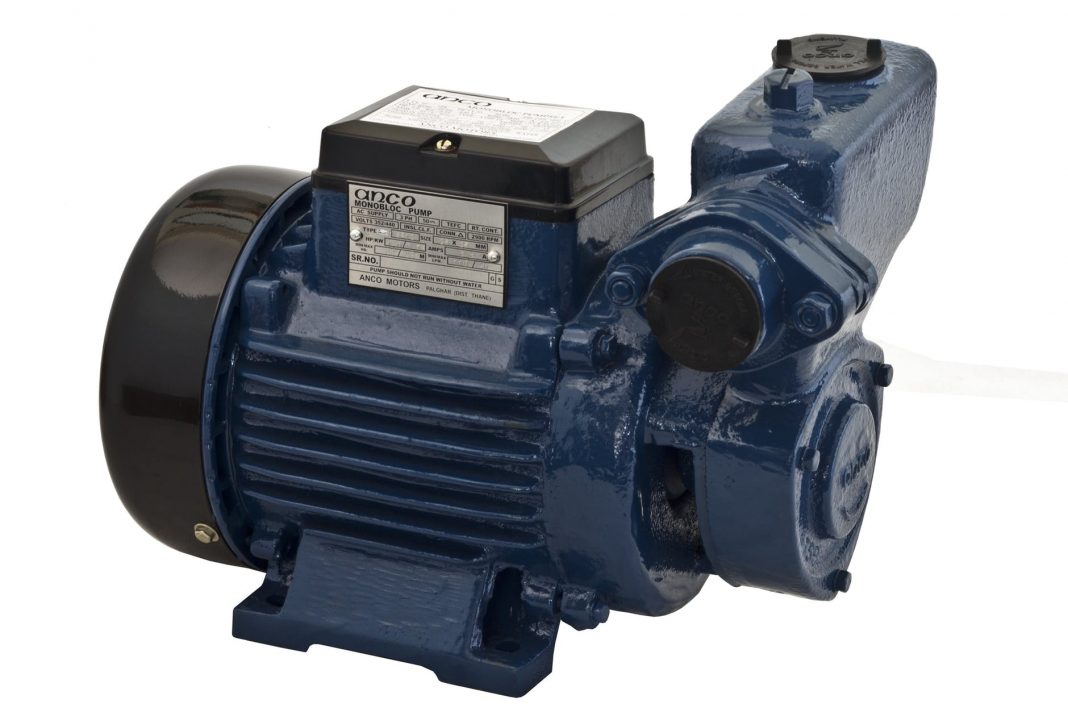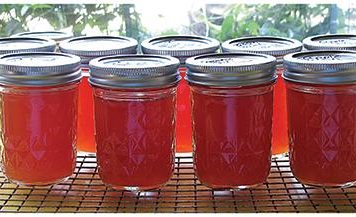 |
|
| Issue #91 • January/February, 2005 |
In the last issue, there was an excellent article by Dorothy Ainsworth on water pumping using mechanical windmills. In this issue I will address another form of “free” water pumping. There are many remote applications where a solar-powered water pump is more cost effective than installing a conventional grid-connected AC pump.
I recently designed a solar-powered pumping system for a local farmer wanting to pump water from a lake up to a watering trough for cattle in a distant fenced field. We have also designed larger systems to pump directly from drilled wells up to elevated storage tanks, which provide gravity-fed water back down to remote ranch buildings.
Basic system description
These solar applications made economic sense because the location was too remote to run a long power line. A solar-powered water system is one of the easiest solar power systems to install, since you will not need a battery or battery charging equipment. When the sun is shining, the system is pumping, when the sun is not shining, the system is offsimple.
|
By adding a storage tank and increasing the size of the pumping system, excess pumped water can be stored, which can continue to supply water during the night or when it’s cloudy and the pump is off.
Low voltage DC pumps designed to operate on solar power are not designed like 220-volt AC water pumps. A DC water pump is designed to pump using the absolute minimum of electrical power. Unfortunately, this also usually means a very low flow rate, so having a storage tank or open trough is essential.
Although the flow rate can be less than one gallon per minute (GPM) for the smaller pump sizes, this small flow will be fairly constant throughout the solar day (9 AM to 3 PM for most locations). This low flow rate can still provide over 350 gallons of water per day from all but the deepest well applications.
A solar module can be mounted almost anywhere, but should face in a southerly direction (for North America). Most farm and ranch applications should have the modules and pump controller mounted on a raised pole to stay above snow drifts and potential damage from animals.
|
A pole mount also allows easier adjustment of module tilt and east-west orientation during initial setup to achieve the best overall year-round performance. For most applications the tilt will be equal to your latitude.
Pump controller
Your solar powered pumping system should include a pump controller such as the one in the photo on page 37. Although it is possible to connect the pump leads directly to the output terminals of the solar module, a controller provides much better pump performance and start/stop control. It will also avoid trying to operate the pump in a stalled condition when solar output is too low.
Each residential-size solar module will produce a fairly constant 17-volts output at almost any level of sunlight. However, the current output (amps) will be directly proportional to sun intensity. The pump will have a minimum current draw when stalled and no pumping is taking place. As the voltage is increased, pump rotation and water pumping is increased as long as enough current is available. During less than ideal solar periods, the current output of the solar module(s) can be below the amp draw required for the pump to begin pumping. A solar pump controller will convert any excess voltage of the solar array to more output current.
The resulting lower voltage will not provide the normal flow output from the slower turning pump, but it will allow reduced flow during those hours the pump will normally be “stalled.” In addition to matching the voltage and current load of the pump with the charging current and voltage output of the solar module, a solar-pump controller also includes wiring terminals for normally open (n.o.) and normally closed (n.c.) switch contacts. This makes it easy to add a high and low level float switch to the storage tank, or a low-limit float switch for the well or pond providing the water source.
The following information is taken from my book titled, Achieving Energy IndependenceOne Step at a Time. You might find this book helpful if you are considering installing your own solar power system, and it goes into much more detail than space allows here.

Table 1 will get you started by estimating how much water you will need per day. Since your pump will not work during cloudy weather, be sure to have a tank or trough that can hold several days’ usage.
Pumping basics
Any well or pressure pump is designed to provide a given flow of water (GPM) for a given pressure or lift (head). Pumping “head” is measured in feet, and represents the total lift the pump can raise water from a low point to a high point. When measuring the distance a submerged pump must raise water, you do not start with how far down the pump is in the well. You start by measuring from the above ground surface down to the lowest level the well water will be during pumping.
For example, let’s say we want to fill an open water tank (no pressure) that is on the top of a small hill.
|
We estimate that the water level in this tank will be 3 feet high above ground level, but the hill top is 50-feet higher than where the well is going to be drilled. The well will be 100 feet deep and the pump will be positioned 80 feet down. We notice the water level is only 30 feet below the surface, but will probably drop considerably when the pumping starts unless it is a very fast refilling well.
If your well driller cannot provide this information, you will need to estimate how much “draw-down” the well will have during pumping. For a fairly fast recharging well, let’s add another 20 feet for this estimated draw-down. For our example, the pump would need to have a minimum lift of (30 feet + 20 feet to lowest water level) + 50 feet elevation of the tank + 3 feet tank water depth = 103 feet total pumping head. If you want to convert feet head to pounds per square inch (PSI) pressure, divide by 2.31 which equals 45 PSI (103/2.31). If your tank will be closed and pressurized, you will need to add the desired tank water pressure to this pump’s head pressure.
Instead of a deep well, you may need to pump from a lake or pond at a lower level up to a storage tank. The pump lift estimating procedures we used in the above deep well example also applies. However, you measure from the lake’s surface level, regardless of how deep the pump will be below the surface.
When using a large body of water as a water source, you will want to suspend the pump off the bottom using an underwater support or surface floats to avoid plugging the pump intake with mud from the bottom.
|
Another common mistake to avoid, is do not oversize the piping. For most applications, you will be pumping less than two GPM, and at this low flow rate, these low flow solar pumps will not provide enough water velocity through a large pipe to keep suspended solids from settling out onto the bottom of the piping. A typical residential size 1/2-HP deep well pump can pump over six GPM, which produces a much higher velocity. For these larger flow AC pumps, larger pipe sizing is used to keep flow resistance low on long piping runs. However, for a low-flow solar pump for applications requiring less than 100 feet of piping, a 1/2-inch PVC pipe size will probably work just fine. For runs over 100 feet, I suggest using 3/4-inch PVC piping. If you need to pump water over 300 feet, a 1-inch pipe size will lower the high pressure drop of the smaller pipe, but you may have problems with sediment settling in the bottom of the pipe due to the low flow rates involved.
Remember, the purpose of the storage tank or drinking trough is to allow a very slow water flow constantly pumping throughout the day, to build up a large volume of water to supply brief periods of high water usage.
Solar module sizing
|
You may want to consult the DC pump distributor to determine the size of solar array that will be required for your specific application. For high pumping heads (feet of lift) or high flow rates, you may want to consider buying a higher voltage DC pump instead of a smaller 12-volt DC pump. This will require using two or more nominal 12-volt solar modules to provide the higher voltage.
To get you started with solar array sizing, it is rare that any solar-pumping application can get by with less than a 75-watt solar module, and larger applications will require two modules for acceptable pump performance. A 48-volt DC pump will require a minimum of four nominal 12-volt solar modules (4×12).
The installation shown in this article supplies water to a cattle drinking trough located 75 feet higher than a nearby lake, which is 300 feet away. We used a 24-volt DC Solar Jack TM pump, two Kyocera 60-watt solar modules, and 320 feet of 3/4-inch PVC pipe. The photos were taken in late October after 6 p.m. and the panels were no longer facing the setting sun, yet there was still almost 1/2-gallon per minute flow of fresh water up to the trough.
Piping head loss

In addition to the elevation head (feet) your pump must lift the water from a low pond or drilled well up to a storage tank, it also must overcome the resistance to flow of the pipe. As I stated earlier, for small-flow DC pumping applications, if you oversize the piping to reduce friction loss, you could increase sediment problems at these low flow data rates. Table 2 provides piping resistance to flow in terms of head (feet). This makes it easy to calculate total pump size, by adding this pipe friction head loss to the lift head we estimated earlier.
As an example, let’s say you need to calculate the piping pressure loss for a 2-gallon per minute flow through 250 feet of pipe. If we use 1/2-inch PVC pipe, the loss would be 8.9 feet head (3.56 x 250/100). If we increased the pipe size to 3/4-inch PVC, the loss would be 2.3 feet head (0.90 x 250/100). At this low flow rate either pipe size will work, unless your pump cannot handle the additional pressure loss of the smaller pipe. As flow rates increase, a larger pipe may be unavoidable on longer pipe runs.
Pump selection

Table 3 provides a size comparison of several popular models of smaller DC pumps, and the relationship of pump flow (GPM) to pump head (feet). Notice how the same pump will have a substantially reduced flow rate as this head pressure is increased. Since this is only a very limited list of pump models and brands available, please consult the dealer for more specific sizing information.
The manufacturers listed in Table 3 offer many other pump models having many different combinations of DC voltage, flow rate, and head or lift. Selecting the right pump for your specific application can reduce the size and cost of the solar array that will be required to provide the power. Buying a low cost pump with poor efficiency will require a much more expensive solar array.
Solar pump suppliersDankoff Solar Pumps Backwoods Solar Real Goods
|
[weaver_widget_area id=’articles_about_yago’ class=’text3′]




















Hi thanks for this great article, I live in the Dominican Republic and have a on demand hot water heater, that sometimes will not work correctly because of lower than normal pressure. Looking to build a solar powered pressure regulator to keep constant pressure of 25-30 lbs etc. Any suggestions
I need a system to pump water uphill about 100feet and 250 feet over to storage tanks
need system to run a pump for crops